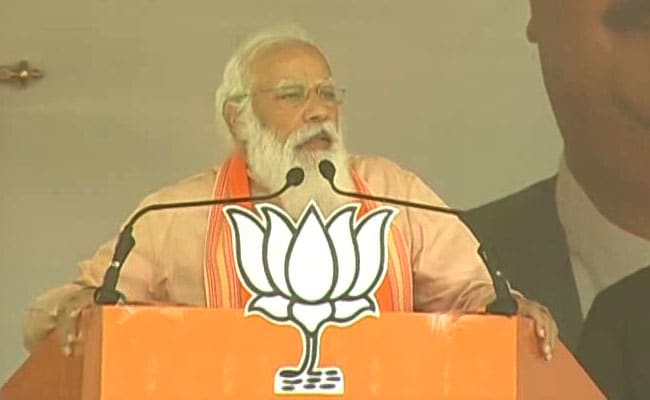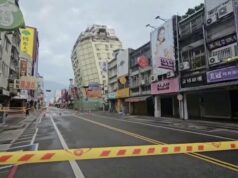What is the significance of the places on PM Modi’s Bangladesh Itinerary?
by
Adrija Roychowdhury,

Prime Minister Narendra Modi will be on a two-day visit to Bangladesh next week, where he will take part in commemorations of three epochal events in the country: Mujib Borsho or the birth centenary of Bangladesh’s father of the nation, Sheikh Mujibur Rahman, 50 years of diplomatic ties and 50 years of Bangladesh’s war of liberation. While in Bangladesh, Modi has planned to visit Rahman’s memorial in Tungipara, also called the Bangabandhu memorial. He will also pay respect to Harichand Thakur at his shrine in Orakandi. Thakur was the founder of the Matua sect, a community which holds significance in the upcoming polls in West Bengal. He is also likely to visit “Sugandha Shaktipith” (Satipith) temple in Shikarpur in Barishal district.
If time permits, Modi will also visit Rabindra kuthi bari in Kushtia and the ancestral home of Bagha Jatin.
Each of the spots on PM Modi’s itinerary is of political, historical or religious significance to both India and Bangladesh.
Bingaman shrine in Tungipara
Located about 420 kilometres from Dhaka, Tungipara was the place of birth of Rahman, the architect of the 1971 Bangladesh War of Independence. This is also the place where he lies buried inside a grand tomb called the ‘Bangabandhu mausoleum’. Millions of people gather here every year on August 15, to observe the day when Rahman was assassinated by a group of disgruntled army officers.
In 2020, the prime minister of Bangladesh Sheikh Hasina along with her party members visited the shrine to pay homage to Rahman, after the Awami League announced its central working committee, re-electing her as president.
Last time PM Modi was in Bangladesh in 2015, he visited yet another site of significance attached to Rahman- the Bangabandhu Memorial Museum in Dhaka, which was the former residence of the founding father and the place he was assassinated.
Harichand Thakur’s shrine in Orakandi
Thakur was the founder of the Matua Mahasangha, which was a religious reformation movement that originated in Orakandi in about 1860 CE. At a very early age, Thakur experienced spiritual revelation, following which he founded a sect of Vaishnava Hinduism called Matua. Members of the sect were the namasudras who were considered to be untouchables. The objective of Thakur’s religious reform was to uplift the community through educational and other social initiatives. Members of the community consider Thakur as God and an avatar of Vishnu or Krishna.
After the 1947 Partition, many of the Matuas migrated to West Bengal. An estimated two or three crore people from the community are spread out over North 24 Parganas, South 24 Parganas, Nadia and smaller parts of Jalpaiguri, Siliguri, Cooch Behar and Bardhaman. Matuas have been influential in deciding the fate of candidates in 30 assembly seats in Bengal. They shifted towards the BJP in the 2019 Lok Sabha polls after the party promised them citizenship. Modi’s visit to the cradle of the Matual movement in Bangladesh, ahead of the West Bengal elections is of political significance.
‘Sugandha Shaktipith’ (Satipith) temple in Shikarpur in Barishal district
Modi is also scheduled to visit the Sugandha Shaktipeeth which is located in Shikarpur, close to Barisal. The temple, dedicated to Goddess Sunanda is of immense religious significance to Hinduism. It is one of the 51 Shakti Pith temples. The Shakti Pith shrines are pilgrimage destinations associated with the Shakti (Goddess worship) sect of Hinduism.
The story behind the Shakti Pith is that after the self immolation of Goddess Sati, her husband Shiva picked up her remains and performed the celestial dance of destruction. Vishnu, in an attempt to stop this destruction, used the Sudarshna chakra on Sati’s corpse, causing her body to tear apart and fall in different spots across the world. Each of the spots where a part of her body fell is called a Shakti Pith. While the majority of them are in India, seven are in Bangladesh, three in Pakistan, three in Nepal and one each in China and Sri Lanka. It is believed that at the Sugandha Shaktipith is where the nose of Sati fell.
Rabindra Kuthi Bari in Kushtia
The Kuthi Bari is a country house built by Dwarkanath Tagore, the grandfather of Nobel laureate and Bengali poetic giant Rabindranath Tagore. The latter stayed in the house for over a decade in irregular intervals between 1891 and 1901.
In this house Tagore composed some of his masterpieces like Sonar Tari, Katha o Kahini, Chaitali etc. He also wrote a large number of songs and poems for Gitanjali here. It was also in this house that Tagore began translating the Gitanjali to English in 1912, for which he was awarded the Nobel Prize in Literature.
Presently, the house has been conserved by the Department of Archaeology and turned into a museum named the ‘Tagore Memorial Museum’. Several items of Tagore’s everyday use such as his bed, wardrobe and his houseboat have been put on display here.
Ancestral home of Bagha Jatin in Kushtia
Jatindranath Mukherjee, better known as ‘Bagha Jatin’ (tiger Jatin) was a revolutionary freedom fighter. He was born in Kayagram, a village in Kushtia district, where his ancestral home is located. Jatin acquired the epithet ‘Bagha’ after he fought a Royal Bengal Tiger all by himself and killed it with a dagger.
Jatin was the first commander-in-chief of the ‘Jugantar Party’ which was formed in 1906 as a central association dedicated to train revolutionary freedom fighters in Bengal. This was the period when Bengal was seething with nationalist furore against Lord Curzon’s declaration of Partition of the province. Inspired by Jatin’s clarion call, “amra morbo, jagat jagbe” (we shall die to awaken the nation), many young revolutionaries joined the brand of the freedom struggle that the Jugantar Party represented.
Jatin is most remembered for an armed encounter he engaged in with the British police at Balasore in Orissa. Before the battle Jatin had been in exile at Mahulidiha village in Orissa’s Mayurbhanj district, giving guerilla warfare training to the local youth. They were expecting a consignment of arms and funds from Germany to lead an armed struggle when the British found out about the plot and raided the spot where the revolutionaries were hiding. Although Jatin lost his life in the Battle of Balasore, his activities did have an impact on the British forces. The colonial police officer Charles Augustus Tegart wrote about Jatin: “If Bagha Jatin was an Englishman, then the English people would have built his statue next to Nelson’s at Trafalgar Square.”
National Martyrs Memorial in Savar
On March 26, Modi will pay tribute to the martyrs of Bangladesh’s War of Liberation in the National Martyrs Memorial located in Savar. Designed by architect Syed Mainul Hossain and inaugurated in December 1982, the memorial, which is also the national monument of Bangladesh, was built in memory of those soldiers who lost their lives in the 1971 war.
The architecture of the memorial consists of seven pairs of triangular walls. Each of the pairs represents a significant period of Bangladesh’s history: the Language movement in 1952, the provincial election victory of the United Front in 1954, the Constitution Movement in 1956, the movement against Education Commission in 1962, 6-point Movement in 1966, the Mass Uprising in 1969 and finally the war of 1971 through which Bangladesh got separated from Pakistan and became a nation by itself.



